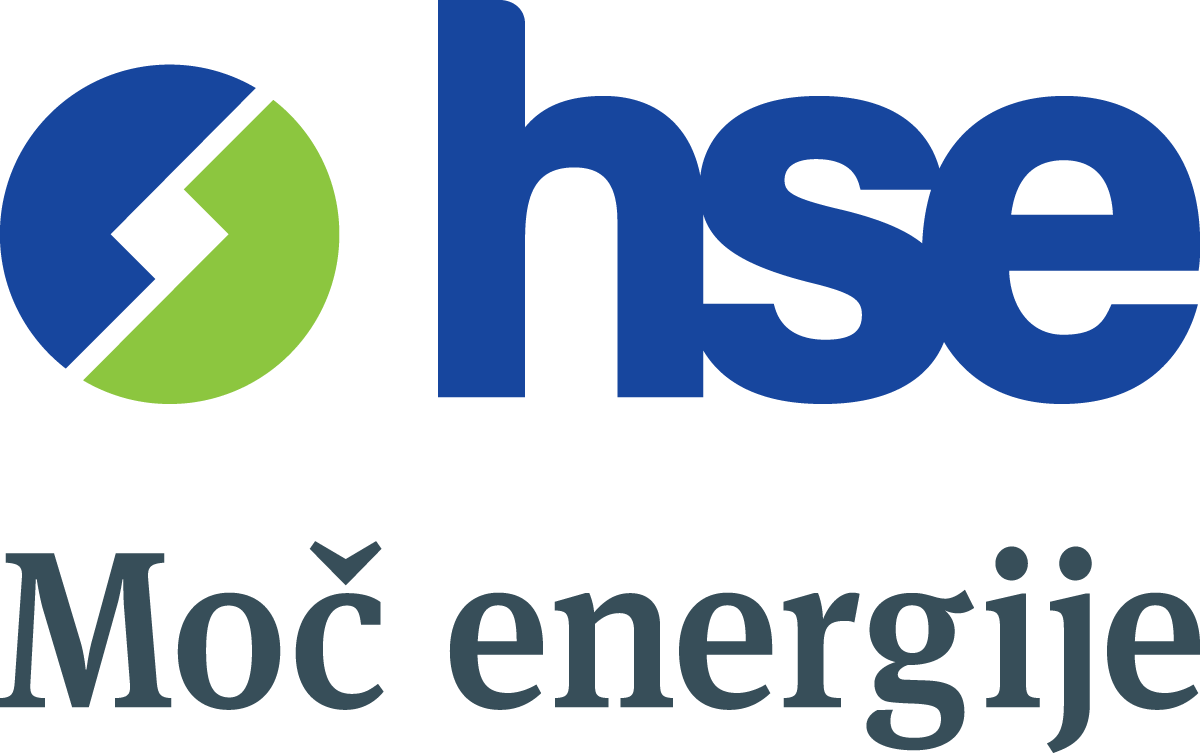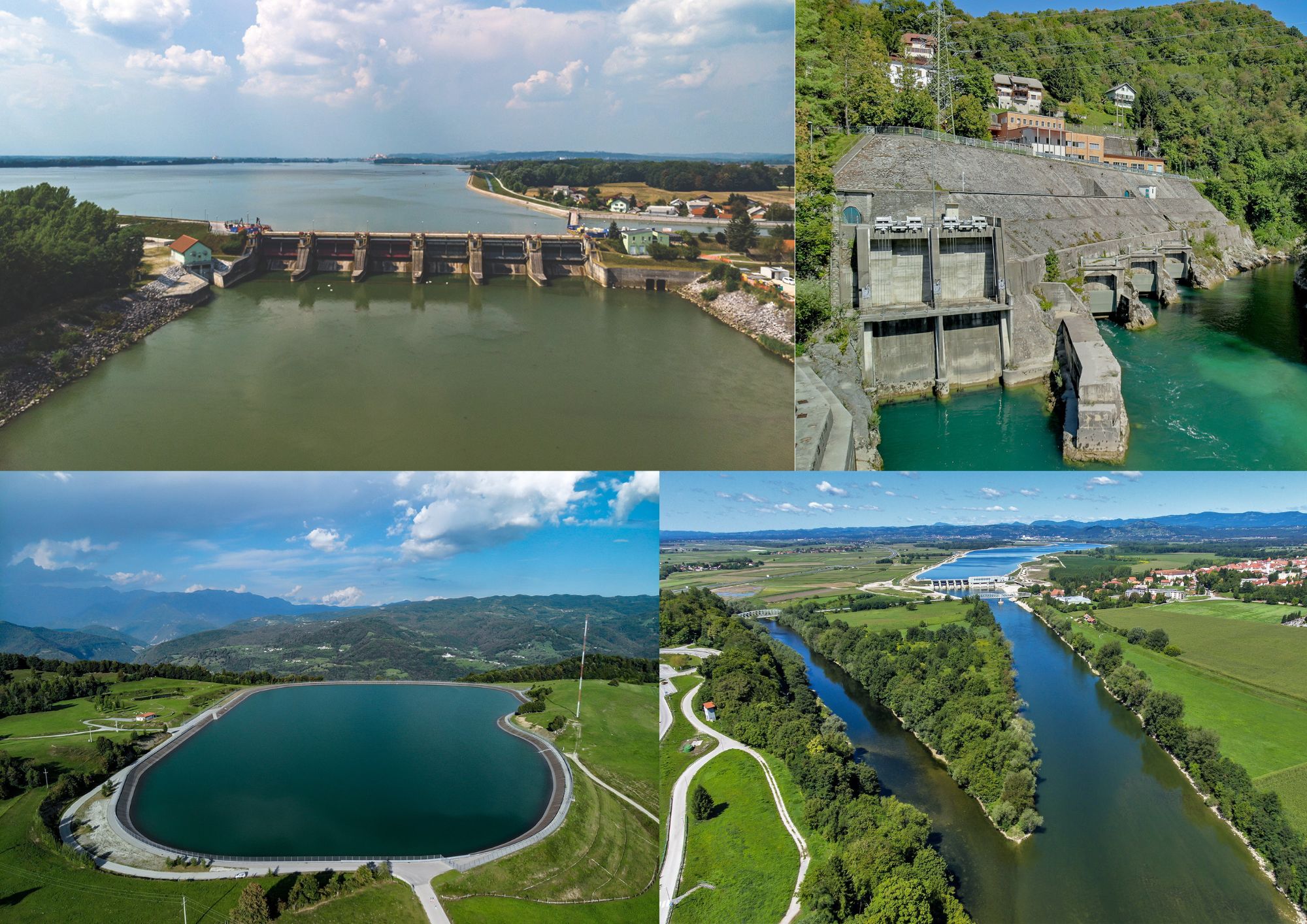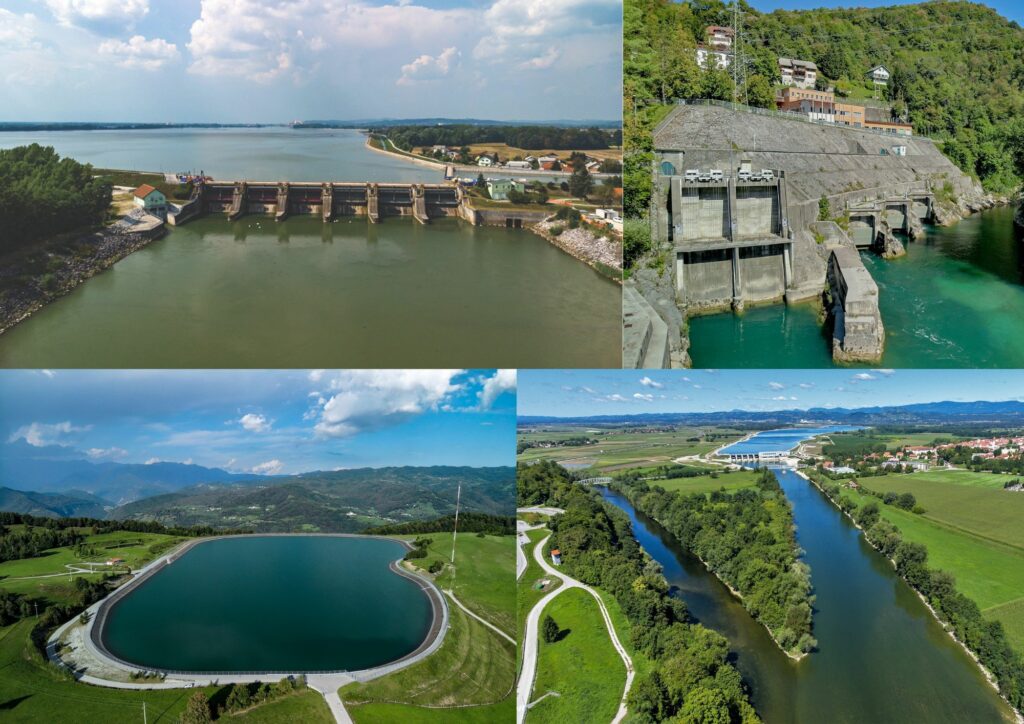(Ljubljana, 22 March 2025) – The HSE Group and its production companies – Dravske Elektrarne Maribor (DEM), Soške Elektrarne Nova Gorica and Hidroelektrarne na Spodnji Savi (in which HSE holds a 49% stake) – are key producers of electricity from Slovenian rivers. Our hydroelectric power plants on the Drava, Soča and Sava rivers produced as much as 4,127 GWh of electricity in 2024, more than 34% of all electricity produced in Slovenia and more than 68% of all electricity produced from renewable energy sources. We are a key player not only in generating electricity from water, but also in renewable energy sources in Slovenia, as we plan and implement the largest investments in this field.
We pay special attention to hydroelectric power in our development plans, an approach that is in line with the recently updated National Energy and Climate Plan (NECP). In the coming years, this plan envisages the development of additional capacities for the production of hydroelectric power in Slovenia. Our country is exceptionally rich in water resources and boasts more than 25,000 kilometres of watercourses, ensuring high water content and a stable water regime throughout the year. This is key to utilising water resources as a renewable energy source, as this is considered one of the most sustainable forms of generation of electricity, by means of hydroelectric power plants that do not cause greenhouse gas emissions. The hydroelectric power plants of the HSE Group are designed, and operate, in accordance with the latest environmental standards and the principle of multi-functionality, which means minimal impact on ecosystems and the environment, while having positive impacts on watercourse management and flood safety.
Currently the largest energy project in Slovenia in hydroelectric power generation, which is being carried out under the auspices of HSE, is the construction of hydroelectric power plants on the middle Sava River. Siting is already under way for the first segment (Suhadol, Trbovlje and Renke) and opinions on the prepared study of variants, i.e. the decree on the most appropriate variant, are being supplemented, and the environmental report is also in the supplementation phase. The first three hydroelectric power plants on the middle Sava River will have a planned total installed capacity of 101 MW, and an estimated annual production of 403 GWh, which is sufficient to supply 100,000 average households. This will make a significant contribution to the planned development of large hydroelectric power plants in the 2020-2040 period, as the NECP envisages an increase in the installed capacity of large hydroelectric power plants by 143 MW before 2040.
As the proportion of renewable energy sources for electricity generation increases, the volatility of electricity generation also increases. For this reason, the need for balancing services is also growing, and this is being addressed by pumped-storage hydroelectric power plants, which provide a level of flexibility. The project of the Kozjak pumped-storage hydroelectric power plant, which will be the second power plant of its kind in the HSE Group and Slovenia in general, is in the phase of implementation of expert bases for environmental impact assessment and of technical bases, all as part of the procedure to obtain an integral construction permit. The Kozjak pumped-storage hydroelectric power plant is of strategic importance and as such is included in the strategic documents of DEM, the HSE Group, as well as the grid operator ELES and the NECP. Pumped-storage hydroelectric power plants are the most widespread, largest and most reliable electricity storage technology in Europe and play an important role in several countries in providing system services and balancing both consumption and production from RES. In addition to this and the Avče pumped-storage hydroelectric power plant, which is already operating under the auspices of Soške Elektrarne Nova Gorica, we want to install an additional pumped-storage hydroelectric power plant, as we expect that the need for such production facilities will increase in the future.
It is also worth mentioning the renovation and upgrade of the Formin hydroelectric power plant, which will take place in 2027-2029 and will enable the continued operation of the plant, while also increasing its capacity by an additional 14.6 MW (from the current 116 MW to 130.6 MW), or an additional 40 GWh of electricity generated per year, which equates to building a 40 MW photovoltaic power plant. Similarly, the company Soške Elektrarne Nova Gorica is preparing documentation and conducting procedures for the renovation and upgrade of the Solkan hydroelectric power plants. The aim and purpose of regular renovations and investment maintenance is to extend the lifespan of existing hydroelectric power plants and improve the energy efficiency of production facilities. The installation of more modern and advanced technologies also reduces negative environmental impact and increases the efficiency of equipment and installations.
Numerous opportunities also arise in simultaneous exploitation of water and riparian surfaces for the generation of electricity. A 2.5 MW solar power plant is operating on the banks of HPP Zlatoličje, and the planned potential of solar power plants on the banks of HPP Formin and HPP Zlatoličje is as much as 30 MW. The SENG company will install a 8.2 MW solar power plant at the location of the upper accumulation of the Avče pumped-storage hydro power plant in Kanalski Vrh. On the surface of Lake Družmirje in Velenje we plan to install the first floating photovoltaic power plant in Slovenia.
When building and utilising the power generation potential of our rivers, we always take into account environmental protection requirements and the principles of sustainable development, while ensuring flood safety and a suitable habitat for aquatic organisms, the development and maintenance of riverbanks, the development of tourism, etc. Together with local communities and other stakeholders, we strive to ensure that our hydroelectric power plants not only provide a reliable electricity supply, but also contribute to preserving nature for future generations. Their successful renovation and modernisation and the development of new projects are key steps towards a sustainable, green future.
Public Relations and Marketing Communication Department of HSE









